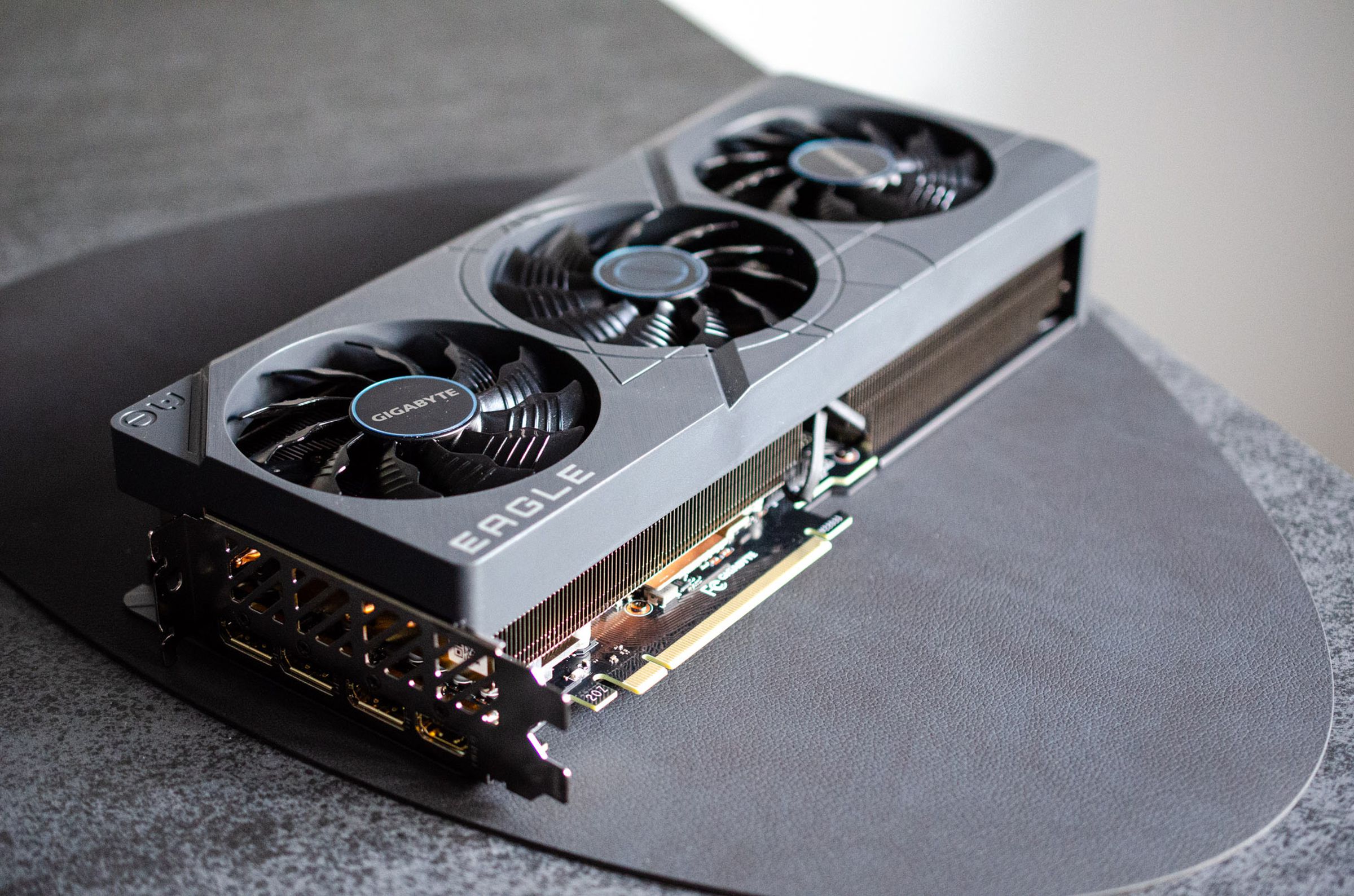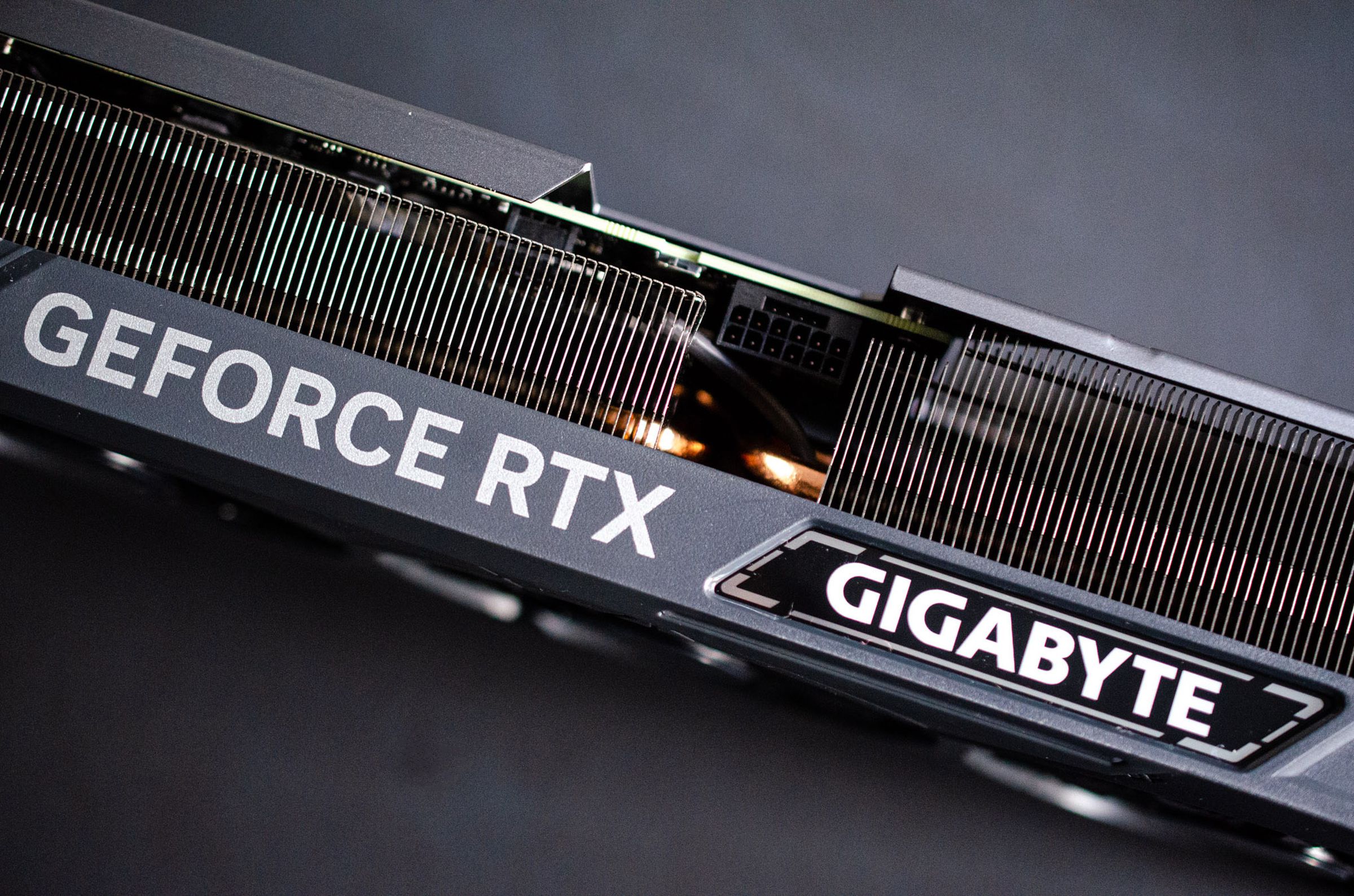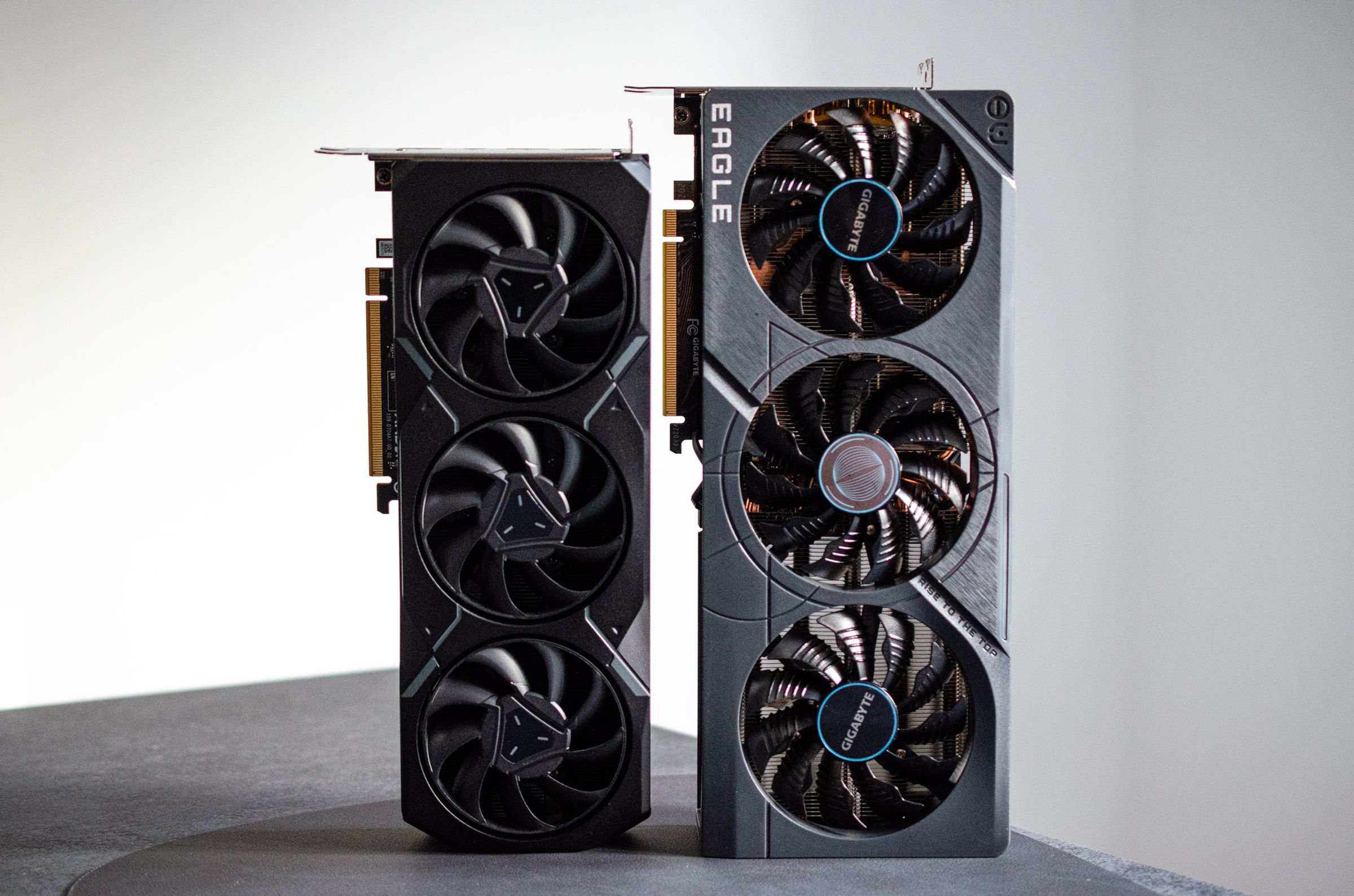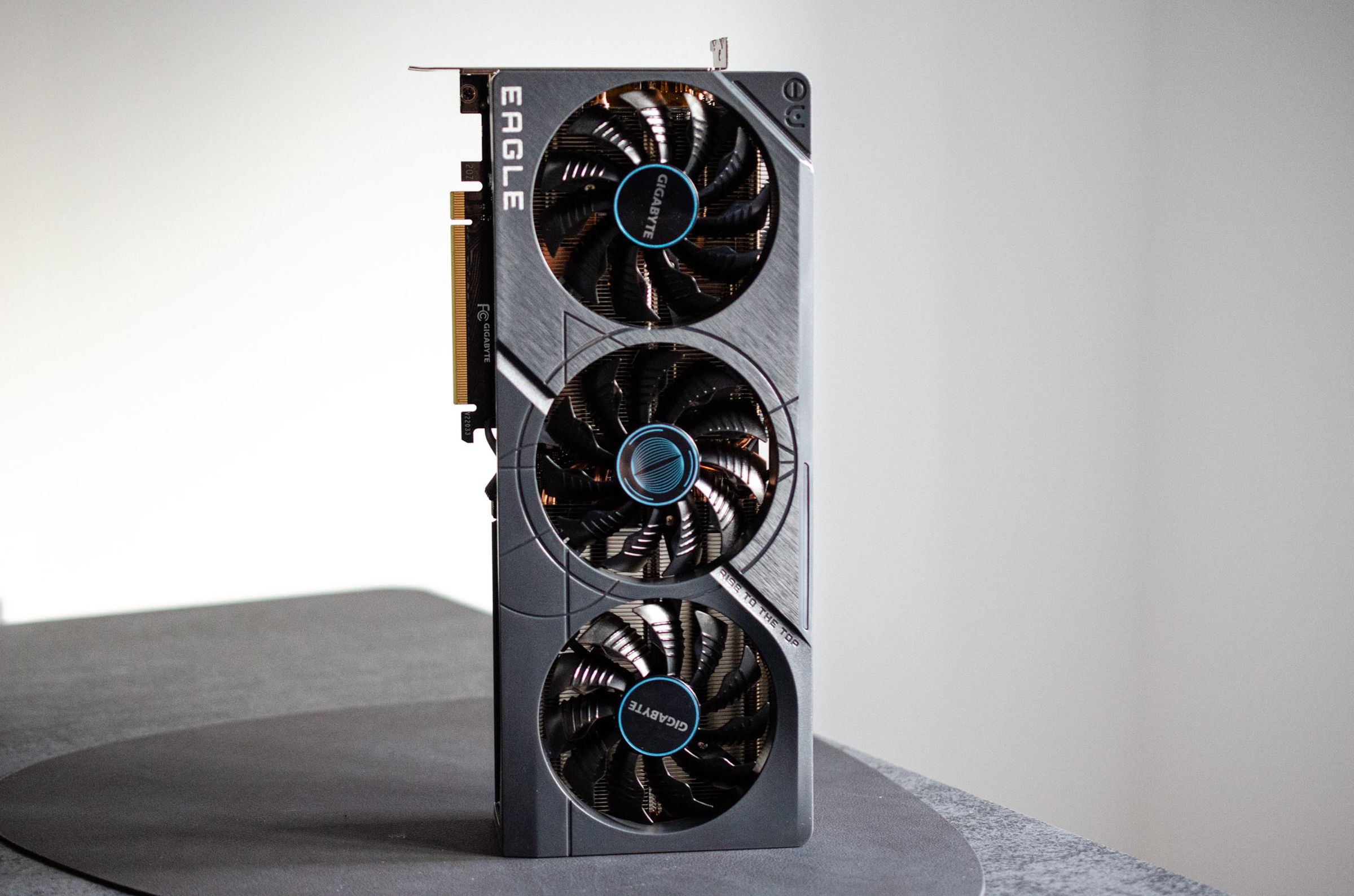The RTX 4070 Ti started off as something very different. Nvidia had planned to launch a 12GB RTX 4080 at $899, but after a backlash, the company decided to “unlaunch” that card. And now it’s back in the form of the RTX 4070 Ti, with identical specs and the same 12GB of memory. The only thing that’s really changed — apart from the branding — is the price. At an expected base price of $799, Nvidia is out to challenge AMD’s latest pricing on its Radeon RX 7900 XT ($899) and RX 7900 XTX ($999) RDNA 3 cards.
It’s a price point that will likely divide the PC gaming community. I, alongside many others, wasn’t sold on the value proposition of the $1,199 RTX 4080 or even the $1,199 RTX 3080 Ti. But the RTX 4070 Ti comfortably beats the RTX 3080 Ti and even the RTX 3090 ($1,499) and comes close to the RX 7900 XT in many games. There’s a clear gap between the 4070 Ti and the 4080, though. The $799 base retail pricing is more affordable compared to the rest of the RTX 40-series lineup and even AMD’s new Radeon cards at first glance, but without a Founders Edition coming directly from Nvidia, the price of the RTX 4070 Ti you can actually buy in stores could be much higher in reality.
The RTX 4070 Ti delivers solid performance at both 1440p and 4K gaming. At a nearly 15 percent price increase, it’s around 20 percent faster than an RTX 3080. Against AMD’s new Radeon RX 7900 XT, the RTX 4070 Ti trades blows in our tests. If you can actually find one at $799, then the performance is a particular sweet spot for high refresh rate gaming at 1440p. That’s an open question though — even the unit from Gigabyte I’ve been testing is retailing for $849. If the real price from Nvidia’s partners, who like to add features and customize the card beyond the base configuration, is closer to $899, then the RX 7900 XT looks even more appealing. The battle between these particular cards will really come down to retail pricing, particularly as it hasn’t been hard to find an RX 7900 XT for $899.
Either way, it’s a good thing Nvidia didn’t try and launch this card as a stripped-down RTX 4080 at $899. That would have gone down like a lead balloon.
How we rate and review products
As there’s no Founders Edition of the RTX 4070 Ti, Nvidia is relying on its board partners to lead the way in the design and layout of its latest GPU. I’ve been testing Gigabyte’s $849 Eagle OC 12GB card, which will represent the typical layout of an RTX 4070 Ti. It has three blade fans at the bottom, a metal back plate at the top, and RGB lighting effects on the side.


A large vapor chamber helps keep the card cool, with an extended heatsink for air to pass through toward your RAM or CPU. At the rear, there are three 1.4 DisplayPorts and a single HDMI 2.1 port. You’ll be able to power a 4K monitor at 240Hz or even an 8K one at 60Hz.
It’s disappointing there isn’t a Founders Edition this time around, as I’ve been a fan of Nvidia’s recent design changes for the RTX 4080 and 4090. But Founders Edition or not, this particular Gigabyte card is still practically the same size as the 16GB RTX 4080. Based on previous Nvidia generations, you’d expect the cards to get a little smaller as you drop down the line, but as this was originally supposed to launch as an RTX 4080, it’s still on the big side.
I didn’t have any problems fitting it into my case, and Gigabyte even supplies an anti-sag bracket to keep your motherboard’s PCIe slot safe from any sag. But as always with the RTX 40-series cards, the power adapter could cause issues clearing side panels with certain cases. Gigabyte is using the single 12-pin PCIe 5 connector on the RTX 4070 Ti, and there’s an adapter cable in the box so you can connect two eight-pin PCIe power cables. That’s one less than on the RTX 4080, largely because this card draws less power.
The RTX 4070 Ti can pull up to 285 watts, 35 less than the RTX 4080. You’ll need at least a 750-watt power supply, and if you’re thinking of upgrading your PSU, then I’d recommend trying to find one of the new ATX 3.0 ones that add the new PCIe 5.0 12VHPWR connector. If not, I still prefer using a custom cable over Nvidia’s chunky power adapter.

1440p benchmarks
For 1440p testing, I paired the RTX 4070 Ti with Intel’s latest Core i9-13900K processor and a 32-inch Samsung Odyssey G7 monitor. This monitor supports refresh rates up to 240Hz as well as Nvidia’s G-Sync technology.
Test machine:
- CPU: Intel Core i9-13900K
- CPU cooler: Corsair H150 Elite LCD
- Motherboard: MSI MAG Z690 Carbon Wi-Fi
- RAM: 32GB Corsair Dominator Platinum DDR5 6600
- Storage: Western Digital SN850 1TB and 2TB Samsung 990 Pro
- Case: Corsair Crystal 570X
- PSU: Corsair HX1000W
I put it head-to-head with the RTX 4080, AMD’s new Radeon RX 7900 XT and XTX, and a handful of RTX 30-series cards to see exactly how this “unlaunched” card compares. Much like my recent GPU reviews, my testing routine includes a variety of AAA games, including Cyberpunk 2077, Forza Horizon 5, and Assassin’s Creed Valhalla.
All games were tested at max or ultra settings across all the GPUs tested, and most games were able to deliver performance in excess of 100fps at 1440p. If you have a 1440p 144Hz monitor, then you’ll be able to comfortably hit the high frame rates with the RTX 4070 Ti, where games feel far smoother than 60Hz.
All told, the RTX 4070 Ti is around 20 percent faster than the RTX 3080 at 1440p. It even beats the RTX 3090 comfortably, so there’s a lot of solid performance here for $799. Shadow of the Tomb Raider manages to push above 200fps, with even Cyberpunk 2077 at ultra settings running above 100fps.
When you compare the RTX 4070 Ti to AMD’s Radeon RX 7900 XT, it trades blows for the price points, with AMD comfortably winning in titles like Assassin’s Creed Valhalla, Watch Dogs: Legion, and Cyberpunk 2077.
RTX 4070 Ti (1440p) average fps
| Microsoft Flight Simulator | 61 | 61 | 67 | 63 | 66 | 61 | 62 | 61 |
| Microsoft Flight Simulator + DLSS 2 or FSR | 56 | 61 | 67 | 59 | 71 | 58 | 58 | 58 |
| Shadow of the Tomb Raider | 215 | 216 | 242 | 259 | 165 | 164 | 179 | 187 |
| Shadow of the Tomb Raider + DLSS 2 | 248 | N/A | N/A | 277 | N/A | 187 | 202 | 211 |
| Forza Horizon 5 | 150 | 141 | 154 | 167 | 130 | 107 | 121 | 125 |
| CS:GO | 504 | 601 | 675 | 590 | 549 | 578 | 612 | 625 |
| Gears 5 | 163 | 149 | 169 | 179 | 121 | 121 | 140 | 138 |
| Control | 157 | 168 | 192 | 187 | 124 | 131 | 149 | 153 |
| Control + DLSS 2 + RT | 174 | N/A | N/A | 194 | N/A | 140 | 155 | 165 |
| Control + RT | 96 | 93 | 108 | 125 | 69 | 82 | 94 | 99 |
| Metro Exodus Enhanced | 89 | 88 | 102 | 110 | 63 | 69 | 78 | 80 |
| Metro Exodus Enhanced + DLSS 2 + RT | 97 | 65 | 76 | 118 | 47 | 75 | 83 | 86 |
| Assassin’s Creed Valhalla | 129 | 144 | 160 | 149 | 112 | 103 | 113 | 117 |
| Watch Dogs: Legion | 115 | 133 | 146 | 136 | 100 | 91 | 100 | 101 |
| Watch Dogs: Legion + DLSS 2 + RT | 98 | 64 | 71 | 105 | 44 | 75 | 86 | 86 |
| Cyberpunk 2077 | 107 | 123 | 139 | 127 | 88 | 85 | 95 | 97 |
| Cyberpunk 2077 + DLSS 2 or FSR + RT | 88 | 63 | 70 | 99 | 44 | 65 | 73 | 75 |
| Cyberpunk 2077 + DLSS 2 or FSR + Psycho RT | 83 | 56 | 63 | 93 | 39 | 61 | 68 | 70 |
| Microsoft Flight Simulator + DLSS 3 | 123 | 127 | ||||||
| Cyberpunk 2077 + DLSS 3 + RT | 128 | 154 | ||||||
| Cyberpunk 2077 + DLSS 3 + Psycho RT | 122 | 149 | ||||||
| Cyberpunk 2077 + DLSS 3 Perf + Psycho RT | 163 | 190 |
Where Nvidia makes up ground is with DLSS and ray-tracing performance. Nvidia’s cards lead AMD here, with noticeable performance boosts with DLSS 2 alone. As the RTX 4070 Ti is a 40-series card, you also get access to DLSS 3, which has had massive performance leaps for the RTX 4080 and RTX 4090 cards so far.
It’s much the same on the RTX 4070 Ti. I’ve tested both Microsoft Flight Simulator and Cyberpunk 2077 with DLSS 3 enabled, and the frame rates are truly impressive compared to what’s available natively. In most cases, it’s difficult to see the difference between Nvidia’s DLSS quality setting and native 4K. Occasionally, there is some softness, but I think most people would struggle to see a visual quality difference and benefit greatly from the higher frame rates.
DLSS 3 still has occasional image glitches in Cyberpunk 2077, though, which is probably why it hasn’t launched publicly yet. I’ve been testing a prerelease version of Cyberpunk 2077, and it delivers frame rates well above 100fps even with all of the settings dialed up and psycho ray tracing enabled. If you’re willing to drop to DLSS performance mode, you can even hit 163fps with all of the settings maxed out at 1440p. That will take full advantage of a 144Hz monitor and looks stunning.
In Microsoft Flight Simulator, DLSS 3 manages to double frame rates. I went from an acceptable 61fps all the way up to 123fps. It’s a staggering jump for a game that’s incredibly demanding on both CPUs and GPUs. As I mentioned in my RTX 4080 review, I’ve still noticed strange results with DLSS 2 on Microsoft Flight Simulator, though, where performance actually drops compared to without DLSS 2 enabled.
4K benchmarks
Over on the 4K side, I tested the RTX 4070 Ti on a 31.5-inch Acer Nitro XV2 monitor. This monitor supports refresh rates up to 144Hz, but the RTX 4070 Ti doesn’t come close to delivering the frame rates to make use of those higher refresh rates.
Every game apart from Microsoft Flight Simulator, Metro Exodus, and Cyberpunk 2077 managed to hit 60fps or above, though. But the RTX 4080 is still up to 20 percent faster at 4K than the RTX 4070 Ti, even if the lower-tier card manages to comfortably beat the RTX 3090.
Cyberpunk 2077 only hits 51fps on the RTX 4070 Ti, shy of the 60fps that AMD’s Radeon RX 7900 XT managed to hit at 4K. The RTX 4080 wasn’t able to quite manage 60fps reliably for me, either, and both cards need DLSS 2 or DLSS 3 to help boost performance much higher.
RTX 4070 Ti (4K) average fps
| Microsoft Flight Simulator | 53 | 53 | 56 | 62 | 38 | 42 | 48 | 50 |
| Microsoft Flight Simulator + DLSS 2 or FSR | 60 | 60 | 62 | 58 | 57 | 56 | 57 | 59 |
| Shadow of the Tomb Raider | 111 | 117 | 133 | 143 | 89 | 92 | 103 | 108 |
| Shadow of the Tomb Raider + DLSS 2 | 147 | N/A | N/A | 187 | N/A | 118 | 131 | 136 |
| Forza Horizon 5 | 111 | 108 | 121 | 122 | 93 | 78 | 89 | 91 |
| CS:GO | 242 | 318 | 409 | 315 | 425 | 374 | 419 | 430 |
| Gears 5 | 85 | 82 | 97 | 97 | 66 | 69 | 80 | 80 |
| Control | 78 | 84 | 99 | 94 | 60 | 68 | 76 | 78 |
| Control + DLSS 2 + RT | 90 | N/A | N/A | 114 | N/A | 77 | 85 | 91 |
| Control + RT | 47 | 45 | 53 | 60 | 32 | 43 | 47 | 50 |
| Metro Exodus Enhanced | 56 | 53 | 65 | 70 | 40 | 45 | 51 | 53 |
| Metro Exodus Enhanced + DLSS 2 + RT | 64 | 36 | 43 | 79 | 25 | 50 | 56 | 58 |
| Assassin’s Creed Valhalla | 79 | 91 | 104 | 97 | 66 | 66 | 72 | 76 |
| Watch Dogs: Legion | 67 | 81 | 95 | 84 | 57 | 56 | 63 | 64 |
| Watch Dogs: Legion + DLSS 2 + RT | 61 | 33 | 39 | 75 | 22 | 46 | 55 | 57 |
| Cyberpunk 2077 | 51 | 60 | 71 | 58 | 40 | 40 | 45 | 48 |
| Cyberpunk 2077 + DLSS 2 or FSR + RT | 45 | 34 | 38 | 54 | 23 | 35 | 39 | 41 |
| Cyberpunk 2077 + DLSS 2 or FSR + Psycho RT | 42 | 30 | 34 | 50 | 20 | 32 | 36 | 37 |
| Microsoft Flight Simulator + DLSS 3 | 106 | 131 | ||||||
| Cyberpunk 2077 + DLSS 3 + RT | 65 | 82 | ||||||
| Cyberpunk 2077 + DLSS 3 + Psycho RT | 64 | 79 | ||||||
| Cyberpunk 2077 + DLSS 3 Perf + Psycho RT | 88 | 112 |
With DLSS 3 enabled in Cyberpunk 2077, I was able to hit 88fps on average with everything maxed out, psycho ray tracing, and DLSS 3 performance mode enabled. DLSS 3 also managed to double frame rates at 4K, and DLSS 2 even managed to help boost performance slightly to push Microsoft Flight Simulator tohit 60fps.
I once again encountered lower than expected performance in Counter-Strike: Global Offensive at both 1440p and 4K. Nvidia was able to reproduce the same dips I saw on the RTX 4080, so I suspect there’s a bug somewhere. Either way, I was still seeing frame rates in excess of 240fps on average at 4K, so you’re still going to make full use of even the best 4K monitors right now with that particular title.
Nvidia did fix some VBIOS issues with the RTX 4080 and RTX 4090 cards that prevented me from getting output on my Samsung Odyssey G7 until the drivers were installed. Unfortunately, the same issue exists on the RTX 4070 Ti. The display still refuses to wake up during the initial BIOS phase, and I have to use an alternative monitor to install the drivers. I’m not sure how many monitor brands are affected by these issues, but hopefully it’s something Nvidia can fully resolve as soon as possible.

The 12GB RTX 4080 RTX 4070 Ti is a great 4K card if you can find one for $799. Like I said earlier, the value of this card will really come down to what it sells for at retail. It’s priced at half of the RTX 4090 ($1,599), with the RTX 4090 delivering around 40 percent more performance in my tests.
It also comfortably beats the RTX 3080, a card that was priced at $699 when it first launched. You’re getting about 20 percent more performance over an RTX 3080. That puts the pricing and performance in perspective in a GPU market where prices have been increasing generation over generation.
If you want something a little more than the RTX 4070 Ti, AMD’s Radeon RX 7900 XT and XTX cards are the obvious choices instead of the $1,199 RTX 4080. It feels like AMD has put a lot of pressure on Nvidia’s pricing for the RTX 4070 Ti, with the card originally supposed to be $100 more expensive.
I think the RTX 4070 Ti could be a popular choice for many if the pricing holds at $799. But with overclocked versions from a variety of card makers and no Founders Edition putting the pressure on pricing, it’s not clear how the mix of pricing for the 4070 Ti will be in reality. I haven’t been able to find a $799 RTX 4070 Ti listed at Best Buy at the time of this review, and the closest are $839 options from MSI and PNY.
If it’s not easy to find a $799 RTX 4070 Ti, then existing Radeon options and whatever more affordable GPUs come next from AMD and Nvidia will really decide the fate of Nvidia’s “unlaunched” RTX 4080.
Photography by Tom Warren / The Verge
